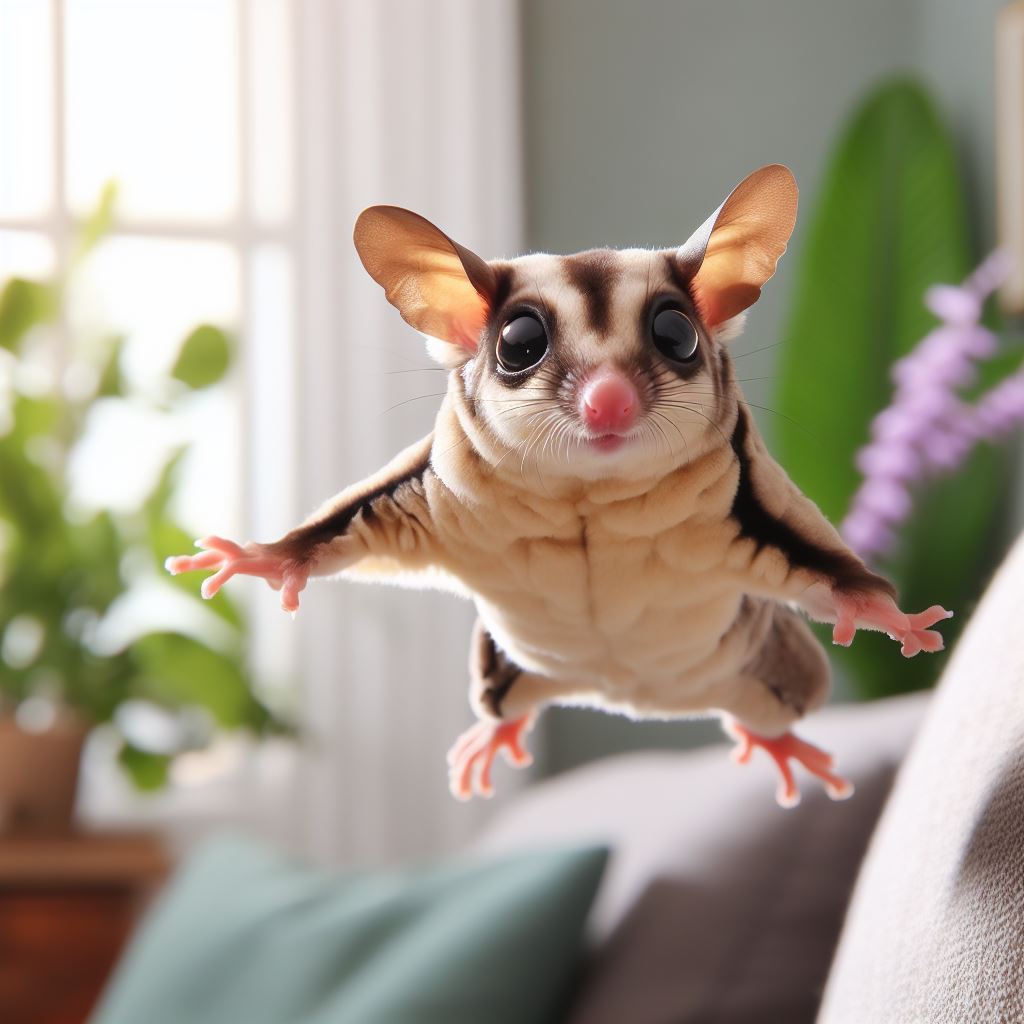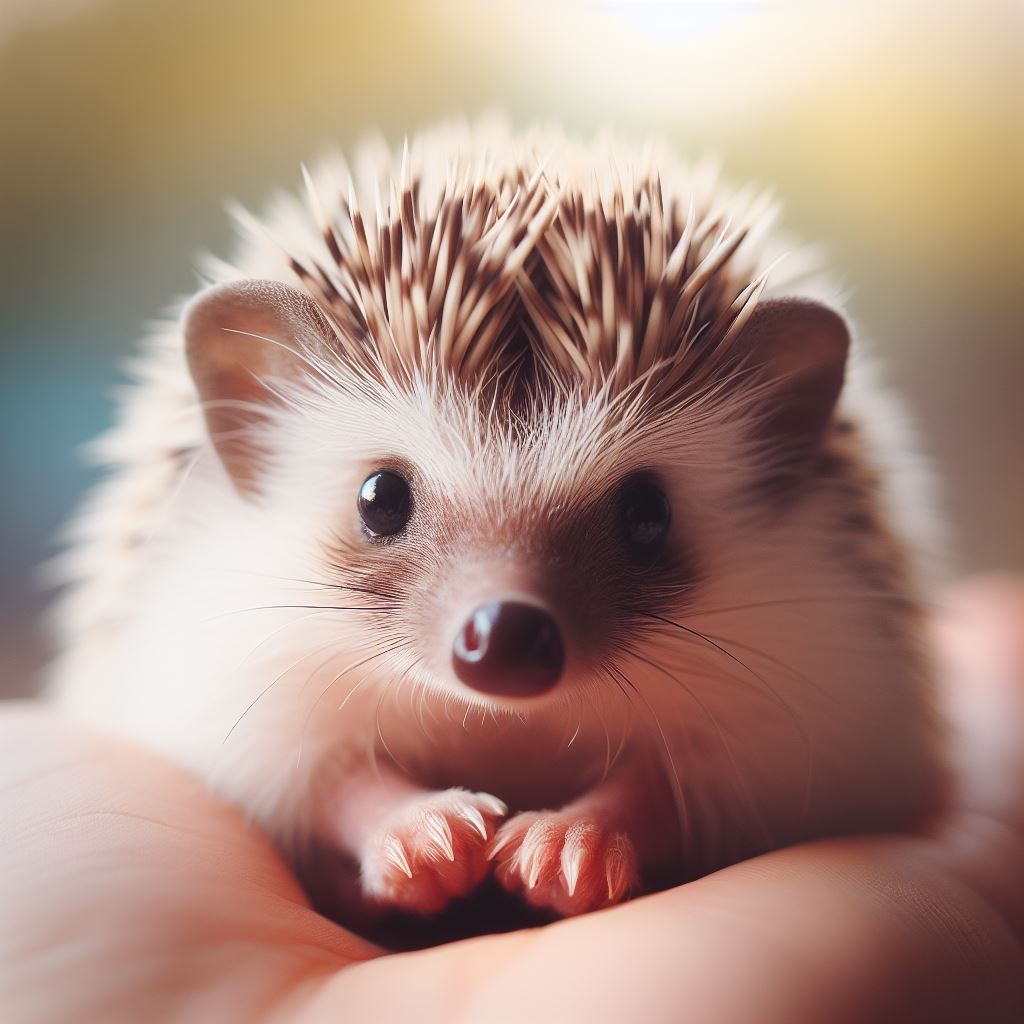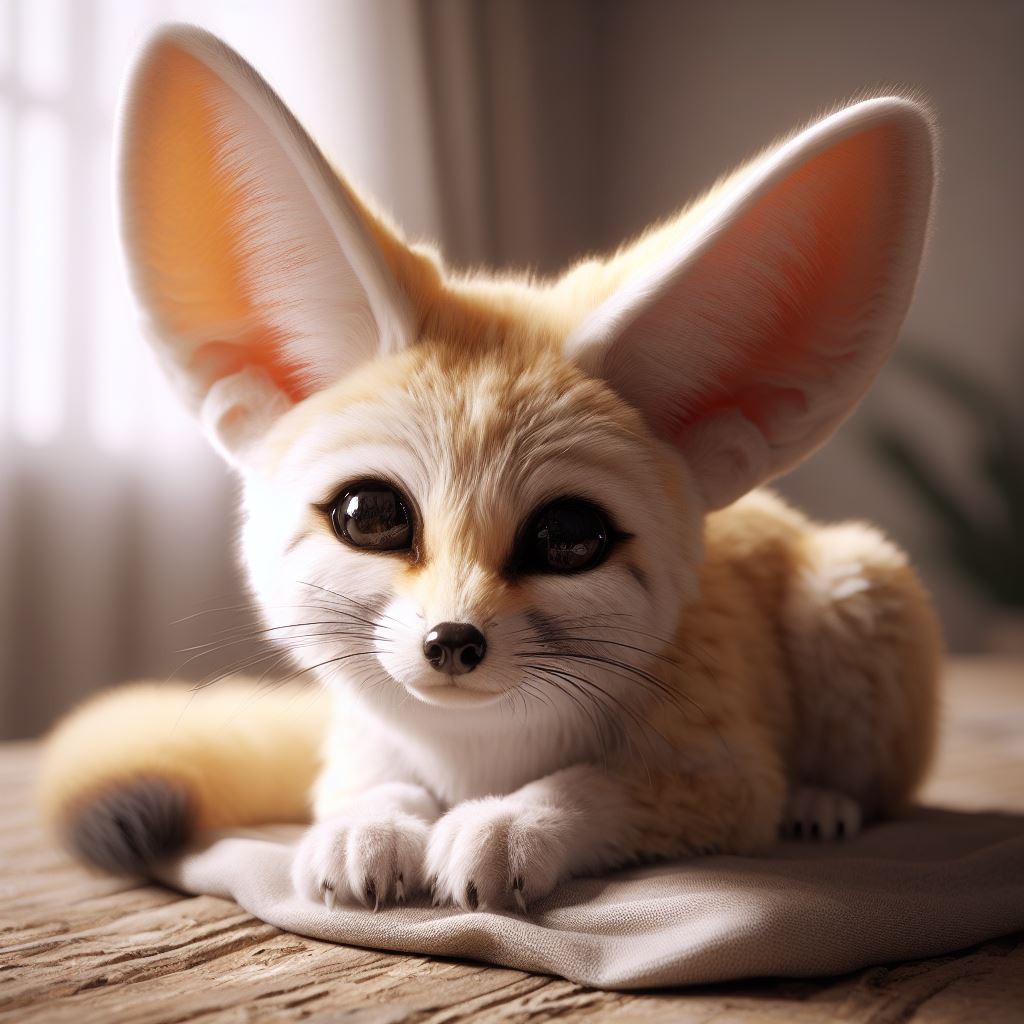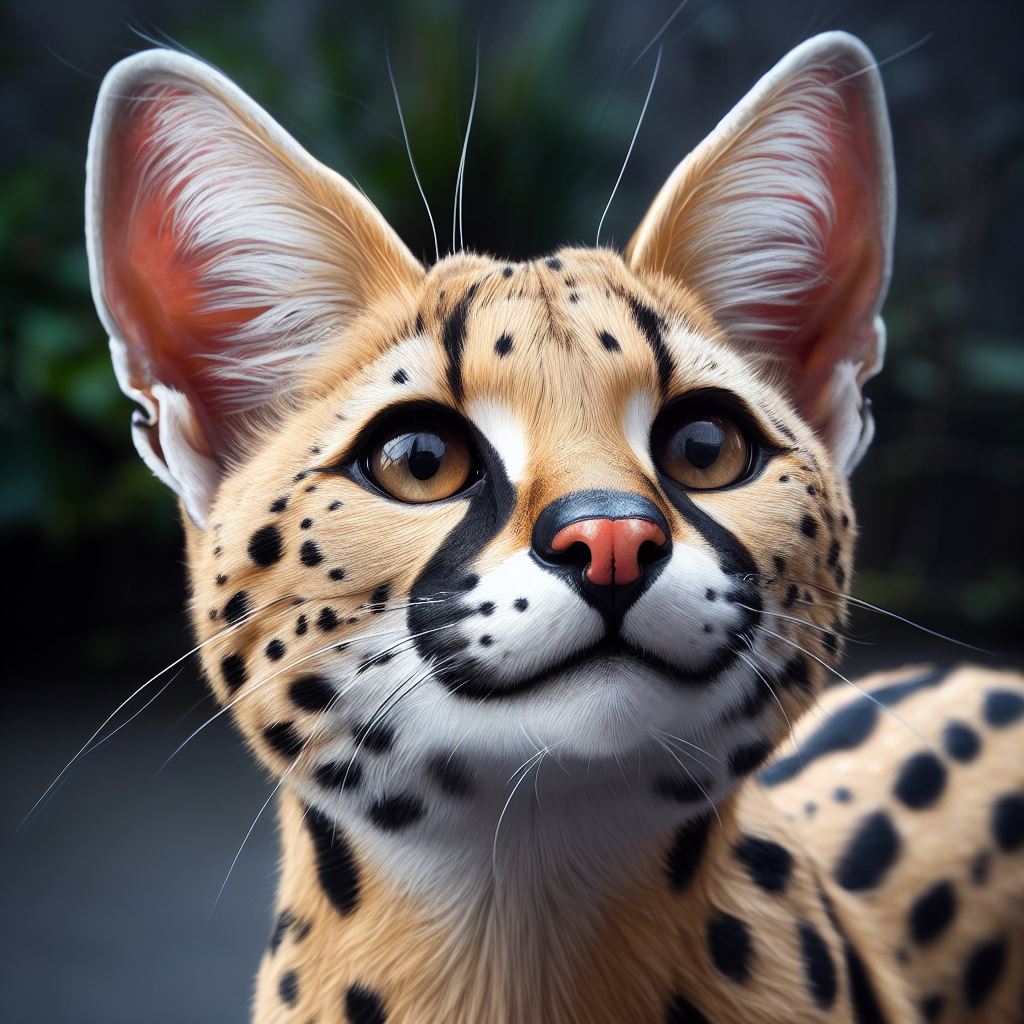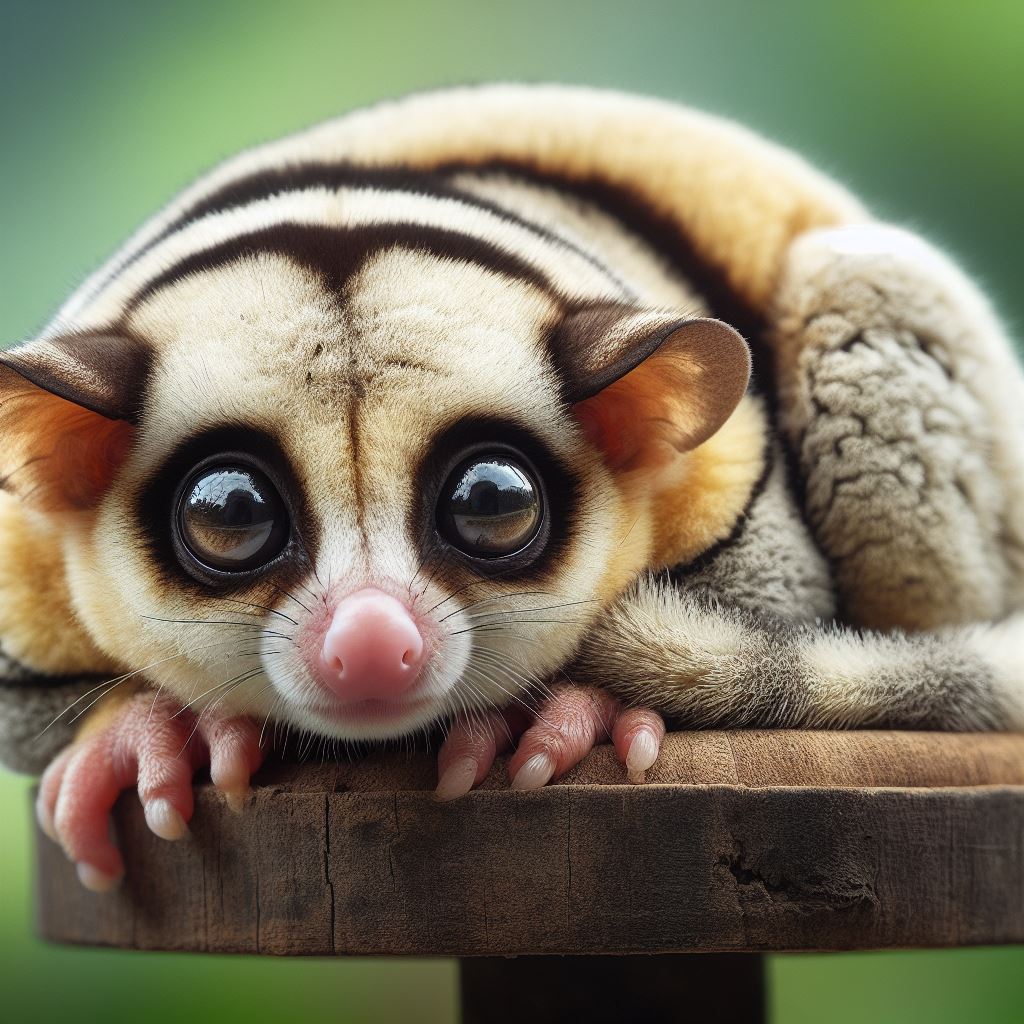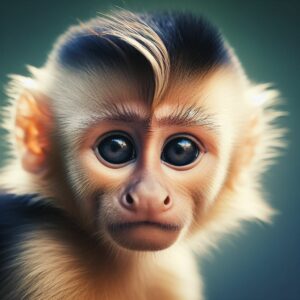In recent years, the allure of exotic pets in America has grown exponentially, and leading this intriguing trend are the charming creatures known as Sugar Gliders. This article delves into the multifaceted world of these endearing marsupials, exploring their origins, unique traits, and the responsibilities that come with their ownership. As we unravel the intricacies of these captivating creatures, we embark on a journey that goes beyond the ordinary realm of domesticated animals.
What are Sugar Gliders?
Taxonomy and Origin
Sugar Gliders, scientifically classified as Petaurus breviceps, are small, nocturnal gliding mammals belonging to the marsupial infraclass. Originating from the lush forests of Australia, New Guinea, and Indonesia, they are renowned for their remarkable gliding abilities, allowing them to gracefully navigate the treetops in search of food and mates.
Physical Characteristics and Unique Features
These enchanting creatures boast a soft, fur-covered membrane, scientifically called a patagium, which stretches from their wrists to their ankles. This specialized adaptation allows them to glide for considerable distances, making them one of the few mammals capable of true flight. Their large, expressive eyes and velvety fur only add to their irresistible charm, making them a favorite among exotic pet enthusiasts.
The Appeal of Sugar Gliders
Adorable Appearance and Playful Behavior
Gliders are renowned for their adorable appearance, characterized by their large, round eyes and delicate, furred tails. Their endearing nature is further enhanced by their playful antics, showcasing a childlike curiosity that captivates the hearts of those fortunate enough to observe them. Whether they are bounding energetically or grooming each other with meticulous care, their behavior is a testament to their engaging personalities.
Bonding with Humans:
Intriguingly, Sugar Gliders are highly social animals, both in the wild and captivity. They form strong bonds with their human caregivers, displaying affectionate gestures such as gentle nuzzling and chirping sounds to express contentment. This unique ability to form emotional connections with humans distinguishes them as extraordinary companions, fostering a sense of camaraderie that transcends the conventional pet-owner relationship.
Sugar Gliders as Exotic Pets
Legalities and Regulations Regarding Sugar Gliders as Pets
However, the ownership of these pets comes with a set of legal considerations. Regulations regarding their ownership vary across states and countries, necessitating prospective owners to research and adhere to specific guidelines. Understanding these legalities is crucial, to ensuring the ethical and lawful acquisition of these delightful creatures.
Tips for Responsible Ownership and Ethical Breeding
Responsible ownership goes beyond providing the necessities. It encompasses creating a nurturing environment that mimics their natural habitat, offering a balanced diet, and ensuring regular veterinary care. Ethical breeding practices, emphasizing the well-being of both the parents and the offspring, contribute significantly to the overall health and genetic diversity of Sugar Glider populations.
Setting Up the Perfect Home
Choosing the Right Cage: Size, Material, and Accessories
Selecting an appropriate enclosure is paramount to the well-being of Sugar Gliders. The cage should be spacious, allowing ample room for gliding and exploration. Additionally, the choice of materials should prioritize the safety and comfort of the inhabitants. Accessories such as branches for climbing, cozy nesting spaces, and engaging toys are essential to create a stimulating and enriching environment.
Creating an Enriching Environment: Toys, Branches, and Nesting Spaces
Enrichment activities play a pivotal role in the physical and mental health of Sugar Gliders. Providing a variety of toys that encourage climbing, problem-solving, and physical activity ensures their mental stimulation. Natural branches, reminiscent of their wild habitat, offer both exercise opportunities and a sense of security. Comfortable nesting spaces, lined with soft materials, cater to their instinctual need for a secure, cozy refuge.
Feeding and Nutrition
Understanding Sugar Gliders’ Dietary Needs: Fruits, Vegetables, and Proteins
A well-balanced diet is fundamental to the health of Sugar Gliders. Their diet primarily comprises a variety of fresh fruits, vegetables, and protein sources. Fruits like apples, grapes, and berries provide essential vitamins, while vegetables such as carrots and leafy greens offer necessary minerals. Protein, vital for their energy and muscle development, can be sourced from insects, boiled eggs, or specially formulated glider pellets.
Avoiding Harmful Foods: A Comprehensive Guide
However, it is crucial to be aware of foods that are toxic to Sugar Gliders. Substances like caffeine, chocolate, and certain fruits like avocados can pose serious health risks. Educating oneself about these potential hazards is imperative, ensuring that the diet remains wholesome and devoid of harmful elements.
Health and Wellness
Common Health Issues in Sugar Gliders: Prevention and Care
Sugar Gliders, like any other pets, are susceptible to various health issues. Understanding common ailments such as gastrointestinal problems, dental issues, and parasitic infections is essential for their prevention and early detection. Regular health checks and vigilant observation of their behavior are valuable tools in maintaining their well-being.
Regular visits to an experienced veterinarian are indispensable. These professionals can conduct comprehensive health assessments, administer vaccinations, and provide tailored advice on nutrition and care. Vaccinations, tailored to their specific needs, bolster their immunity against prevalent diseases, ensuring a long and healthy life.
Socializing and Bonding
Building Trust: Tips for Socializing Sugar Gliders
Building a strong bond with Sugar Gliders requires patience, time, and gentle handling. Socialization efforts should begin early, allowing the gliders to acclimate to human presence and touch gradually. Positive reinforcement techniques, such as offering favorite treats, help in building trust and fostering a sense of security in their interactions with humans.
Bonding Activities: Interactive Play and Handling Techniques
Interactive play sessions further strengthen the bond between owners and their Sugar Gliders. Engaging in activities like supervised gliding, climbing on safe surfaces, and exploring designated play areas enhances their physical prowess and mental acuity. Regular, gentle handling, supported by soothing words, instills confidence, making them comfortable with human companionship.
Breeding and Reproduction
Breeding Considerations: Age, Health, and Genetics
For those interested in expanding the Sugar Glider family, understanding the intricacies of breeding is vital. Breeding should only be considered when the gliders have reached sexual maturity, ensuring both physical and emotional readiness. Additionally, thorough knowledge of their genetic background helps in preventing hereditary issues and promoting the overall health of the offspring.
Caring for Joeys: Rearing Baby Sugar Gliders
Rearing baby Sugar Gliders, commonly referred to as joeys, demands specialized care. Ensuring a warm, secure nesting environment, along with a nutritionally rich diet, is paramount. Proper hydration and consistent monitoring of their growth milestones are crucial in the early stages of their development, guaranteeing their optimal health and well-being.
Sugar Gliders in the Wild
Natural Habitat and Behavior of Wild Sugar Gliders
To truly appreciate these captivating creatures, understanding their behavior in the wild is enlightening. Sugar Gliders are arboreal, dwelling in the dense forests of their native habitats. Their gliding abilities are not merely a mode of locomotion but also a sophisticated method of hunting for food and escaping predators. Observing their natural behavior provides valuable insights into their requirements in captivity.
Conservation Efforts: Protecting Sugar Gliders in the Wild
Sadly, the habitats of Sugar Gliders in the wild are under constant threat due to deforestation and climate change. Conservation efforts are crucial in preserving their natural ecosystems. Supporting organizations dedicated to habitat preservation and wildlife conservation plays a pivotal role in ensuring the survival of these remarkable creatures for generations to come.
Frequently Asked Questions
Addressing Common Queries: Diet, Behavior, and Care
Prospective Sugar Glider owners often have a plethora of questions regarding their care. Addressing common queries about their diet, behavior, and general care is instrumental in dispelling misconceptions and providing accurate information. A well-informed owner is better equipped to cater to the unique needs of these delightful companions.
Expert Answers: Clearing Misconceptions about Sugar Gliders
Additionally, clearing prevalent misconceptions regarding Sugar Gliders is essential. From their dietary requirements to their social behavior, understanding these aspects dispels myths and fosters a more informed perspective. Expert insights from veterinarians and experienced caregivers contribute to a comprehensive understanding of these extraordinary creatures.
The Ethical Aspect of Sugar Glider Ownership
Ethical Considerations: The Impact of the Pet Trade on Sugar Gliders
While the companionship of Sugar Gliders is undeniably rewarding, it is imperative to address the ethical considerations surrounding the pet trade. The demand for these exotic pets has led to issues such as illegal trafficking and unethical breeding practices. Raising awareness about these challenges is essential in fostering responsible ownership and advocating for the well-being of these creatures.
Adopting and Rescuing Sugar Gliders: Making a Difference
Opting for adoption or rescue is a commendable choice for prospective Sugar Glider owners. Numerous organizations and rescue centers are dedicated to providing shelter and care to Sugar Gliders in need. By choosing adoption, individuals not only provide a loving home to a vulnerable animal but also contribute to the efforts aimed at curbing the negative impact of the pet trade.
Training and Enrichment Activities
Training Sugar Gliders: Basic Commands and Behavioral Training
Contrary to popular belief, Sugar Gliders can be trained to respond to basic commands. Positive reinforcement techniques, combined with patience and consistency, can teach them commands like recall and stay. Training not only enhances their cognitive abilities but also strengthens the bond between the gliders and their caregivers.
DIY Enrichment Ideas: Engaging Activities for Mental Stimulation
In addition to formal training, engaging Sugar Gliders in stimulating activities is essential for their mental well-being. DIY enrichment ideas, such as puzzle feeders, foraging games, and sensory experiences, provide mental stimulation, preventing boredom and ensuring their overall happiness. These activities tap into their instincts, encouraging their innate problem-solving abilities.
The Future of Sugar Gliders as Pets
Trends and Innovations: New Products and Services for Sugar Glider Owners
The world of exotic pet care is continually evolving, with innovative products and services tailored to the unique needs of Sugar Gliders. From specialized dietary supplements to advanced enclosure designs, these offerings enhance the quality of life for both the gliders and their owners. Staying informed about these trends ensures that Sugar Glider owners can provide the best possible care for their beloved pets.
Shaping a Responsible Future: Advocacy and Education Efforts
Advocacy and education play pivotal roles in shaping a responsible future for Sugar Gliders as pets. By raising awareness about their specific requirements, legal regulations, and ethical considerations, advocacy efforts contribute to the creation of informed communities. Education initiatives targeting prospective owners, as well as the general public, foster a culture of empathy and responsibility towards these enchanting creatures.
Conclusion
In conclusion, delving into the world of Sugar Gliders offers a glimpse into the extraordinary realm of exotic pets. Their endearing charm, coupled with their unique behaviors, makes them fascinating companions for those willing to invest time, effort, and love. By embracing responsible ownership practices, advocating for their well-being, and appreciating the profound joy they bring, we pave the way for a future where Sugar Gliders thrive as cherished members of our families. Let us embark on this enriching journey, fostering a deep connection with these remarkable creatures and ensuring their enduring legacy in the realm of exotic pets.

